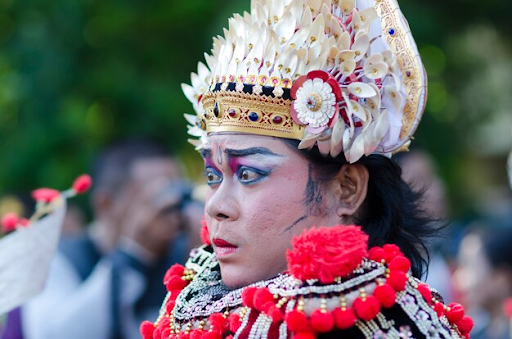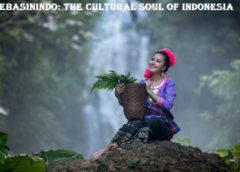There are many customs in Indonesia, a country renowned for its rich cultural variety and lively traditions, that capture the essence of the people’s history and character. Bebasinindo is a distinctive and well established tradition among them. It is a living reminder of Indonesia’s legacy, a link between the past and present, and a lighthouse pointing the way forward. It is more than simply a ritual or tradition.A world where culture, faith, and community are interwoven is revealed by exploring Bebasinindo. Its history, meaning, and development throughout time must all be examined in order to fully comprehend its core. This custom, full with significance and symbolism, offers a glimpse into Indonesian culture.
Tracing the Origins of Bebasinindo
Bebasinindo’s origins are deeply ingrained in Indonesian history. It was a spiritual activity that originated from ancient tribal ceremonies and was used to honour ancestors, establish a connection with nature, and ask for blessings for peace, fertility, and wealth. These rites were gestures of veneration that spoke to the people’s sense of community rather than being just performances.According to historical accounts, the custom originated with native tribes who thought that every movement, voice, and gesture had mystical meaning. The trading routes that introduced Buddhism, Hinduism, and even Islamic and European practices to the Indonesian archipelago had an impact on the tradition throughout the years. Bebasinindo is now a vibrant and changing tradition that symbolises Indonesia’s multicultural past thanks to the merging of influences.
The Cultural and Spiritual Significance
Bebasinindo is more than just a ritual; it is a cultural expression that embodies the values of harmony, respect, and community. At its core, Bebas Indo serves to strengthen bonds among participants, whether they are family members, neighbours, or members of a larger community. Bebas Indo rituals are often associated with important life events, like births, weddings, and rites of passage. These moments are marked by ceremonies that combine prayer, dance, and offerings; each element is intentional and significant, reflecting a deep connection to the land, the ancestors, and the divine. This tradition also serves as an artistic outlet, showcasing the Indonesian people’s creativity and craftsmanship, from intricate patterns in ceremonial attire to the melodic sounds of traditional instruments, every detail of Bebasinindo is a celebration of artistry
The Evolution of Bebasinindo
Bebasinindo has changed significantly throughout the years. At first, it was just a spiritual exercise based on antiquated ideas. However, the custom changed to stay relevant when Indonesia underwent cultural changes brought on by modernisation and globalisation.Today, the archipelago celebrates Bebasinindo in a variety of ways. Rural regions preserve the more traditional elements of the practice, while urban groups have embraced modern art forms. Bebasinindo festivals often include acts that blend contemporary storytelling methods with traditional dance and music.Another important factor in reviving interest in Bebasinindo has been social media. Online videos and pictures of ceremonies have gained international interest, attracting visitors and aficionados who are keen to experience the custom for themselves. Bebasinindo has been preserved and made more widely known because of its online presence.
How Bebasinindo is Practiced Today
Bebasinindo is still a lively custom that is enthusiastically observed in contemporary Indonesia. Communities unite to commemorate this custom, combining traditional rites with contemporary interpretations. Music, dancing, and gifts are often included into the rituals, resulting in a holistic event that enthrals both participants and onlookers.To educate the next generation about the importance of Bebasinindo, workshops and educational initiatives have been set up. These programs seek to promote innovation while upholding tradition. Young Indonesians are thus rediscovering their cultural heritage and figuring out how to incorporate Bebasinindo into modern life.Festivals honouring Bebasinindo have grown in popularity as a way to highlight its importance and beauty. These events provide communities a stage to commemorate their history and often include storytelling sessions, art exhibits, and traditional performances.

Misconceptions and Controversies
Bebasinindo is often misinterpreted despite its significant cultural significance and lengthy history. Some disregard its deeper cultural and spiritual significance, seeing it as a superstitious activity. Others believe it to be an antiquated custom that has no place in the contemporary world.The way Bebas Indo is portrayed in the media also sparks controversy. Its essence may be distorted by sensationalised depictions, which can result in misunderstandings and preconceptions. Furthermore, arguments about modernisation vs authenticity have spurred conversations among communities, with some supporting adaptation and others preservation.These difficulties show how much more information and discussion on Bebasinindo are needed. Misconceptions may be cleared up and the tradition can flourish by promoting respect and understanding.
The Impact of Bebasinindo on Society
Bebasinindo has social and economic ramifications in addition to its cultural preservation significance. The custom strengthens ties throughout the community and upholds cultural values by giving Indonesians a feeling of pride and identity.Bebasinindo makes a financial contribution to the travel and tourist sector. Ceremonies and festivals draw tourists from all over the globe, which strengthens local economies and offers chances for cross-cultural interaction.Bebas Indo acts as a social link between generations. In order to maintain the custom as an essential component of Indonesian culture, elders teach younger members their knowledge and abilities. All participants’ lives are enhanced by this intergenerational relationship, which promotes respect and understanding between them.
Embracing the Spirit of Bebasinindo
Adopting Bebasinindo is a way to honour Indonesia’s rich cultural legacy. This lively custom provides a special chance to strengthen ties within the community, connect with the past, and delve into the spiritual side of life.Engaging with Bebasinindo may enhance one’s understanding of Indonesia’s rich cultural diversity, whether via taking part in rituals, going to festivals, or just studying about its past. It serves as a reminder of how tradition can bring people together and foster a feeling of community.
Conclusion
More than just a custom, bebasinindo is a vibrant representation of Indonesian culture. Its many levels of artistry, history, and significance demonstrate the Indonesian people’s inventiveness and tenacity.This custom, which connects the past and the future, is nevertheless an essential component of the country’s character even as it develops. By adopting Bebasinindo, we pay tribute to the values and narratives that characterise Indonesia in addition to a tradition.This age-old custom encourages us all to appreciate the beauty of ethnic variety and our common humanity.
Read More: HCOOCH CH2 H2O: A Comprehensive Exploration
FAQs
What is Bebasinindo?
An ancient Indonesian custom with spiritual and cultural importance is bebasinindo. It includes dancing, music, and rituals that strengthen ties within the community and help people connect with their ancestry.
Where did Bebasinindo originate?
Bebasinindo has its roots in old tribal customs in Indonesia that have been shaped over generations by many civilisations.
Is Bebasinindo still practiced today?
Indeed, both traditional and contemporary forms of Bebasinindo are being practiced across Indonesia.
How can I learn more about Bebasinindo?
There are chances to learn about Bebasinindo via workshops, festivals, and internet resources. It’s also strongly advised to get in touch with local practitioners.
Are there controversies surrounding Bebasinindo?
Misunderstandings and debates about modernization versus authenticity have sparked some controversies, but efforts are ongoing to preserve its essence while embracing progress.



